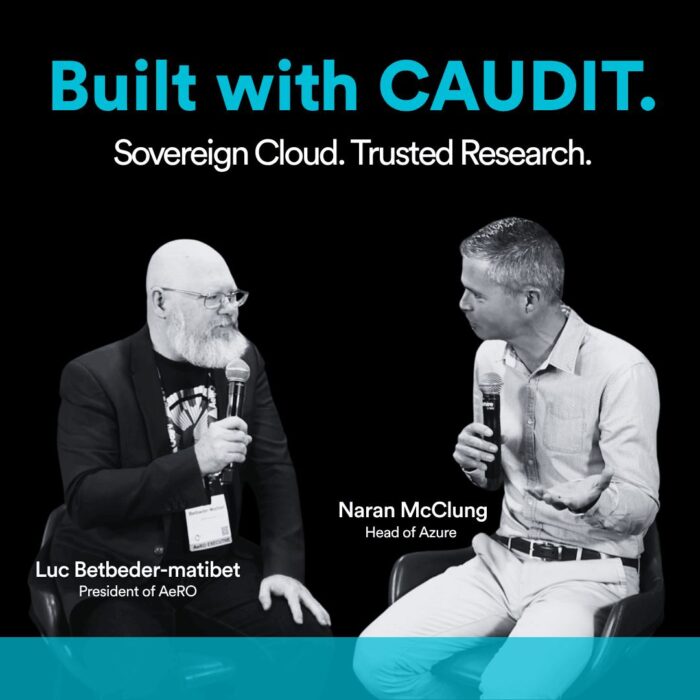AI Meets Mars: How Generative Tools Are Unlocking 20 Years of Rover Science
TL;DR
At the 2025 eResearch Conference, Macquarie Cloud Services spoke with Paulo De Souza about the extraordinary scientific legacy of NASA’s Mars rovers. What began as short, three-month missions evolved into nearly two decades of continuous operation, generating an expansive dataset that researchers are still exploring today. Paulo explains how generative AI is accelerating the interpretation of complex mineral data, enabling faster decision-making, and opening new opportunities for researchers and PhD students. He also reflects, lightly and humorously, on the public fascination with unusual Mars images that frequently go viral.
Exploring Two Decades of Mars Rover Science: A Conversation with Paulo De Souza
At the 2025 Australian eResearch Conference in Brisbane, Narran McClung from Macquarie Cloud Services had the opportunity to sit down with Paulo De Souza, whose work in planetary science and data analysis has placed him at the centre of one of humanity’s most ambitious scientific endeavours: the Mars rover missions. Their conversation offered a rare look into the sheer scale, complexity and long-term impact of the data collected during these missions.
From the outset, Paulo reminded us of something extraordinary that is often taken for granted. The Spirit and Opportunity rovers were never intended to be long-term residents of Mars. Their design life was a modest 90 days. Yet, against all engineering expectations, Spirit continued to operate for more than five years, while Opportunity remained active for an astonishing fourteen. Paulo likened this to visiting a laboratory every single day for nearly twenty years. Except this laboratory sits on the surface of another planet, and every data point has to travel millions of kilometres to reach us.
Over those years, the rovers captured a vast and diverse archive of information. Every image, whether in black-and-white or hyperspectral format, was paired with detailed metadata describing location, instrument settings, environmental conditions, rover health and more. These weren’t simply photographs; they were scientific artefacts embedded with layers of context. Paulo described how engineering data, such as battery levels, available memory and solar exposure, was just as important for interpreting results as spectral signatures of the rocks themselves. When combined with data collected by orbiters circling Mars at the same time, the result is a remarkably comprehensive record of the Martian environment.
With such a massive dataset, the role of generative AI becomes especially significant. Paulo explained that Mars geology presents a particularly complex challenge because there are more than 500 minerals containing iron alone, many of which can appear similar in spectral form. Even the most experienced spectroscopists may struggle to identify them quickly. AI, he said, acts as an analytical accelerator. It can rapidly suggest likely mineral compositions, help prioritise hypotheses and support researchers who often have only a few hours to analyse new data before mission teams must plan the next Martian day. Importantly, Paulo emphasised that AI is not replacing the human expert. Instead, it strengthens the scientist’s ability to work efficiently and confidently under tight constraints.
Despite years of analysis, Paulo made it clear that the rover dataset is far from exhausted. Vast portions remain untouched, waiting for new methods, new tools and new questions. This presents an invaluable opportunity for PhD students, who frequently draw upon this publicly available archive to build their theses and research projects. The combination of historical data and modern analytic tools means that fresh discoveries are still emerging, even long after the rovers themselves ceased operation.
The interview also took a playful turn when Narran asked Paulo about a widely circulated image from Mars that appeared to show a square-shaped structure. With a smile, Paulo joked that the matter was “top secret,” hinting that revealing the truth might require erasing the audience’s memory. It was a lighthearted moment that acknowledged the enduring public fascination with Mars and the ease with which unusual shapes in rock formations can inspire imaginative theories. His humour underscored an important point: curiosity is not only natural but welcome, and it often serves as a gateway for wider engagement in science.
This conversation reflects a broader theme emerging across the research sector. As scientific data grows in volume and complexity, the infrastructure supporting it becomes just as critical as the insights researchers hope to uncover. Macquarie Cloud Services’ presence at this year’s conference, with a focus on secure, scalable research platforms, aligns strongly with this vision. Modern research increasingly depends on environments that can handle vast datasets, integrate advanced AI tools and deliver consistently high performance under pressure. The Mars rover missions, in many ways, illustrate the extreme end of this spectrum.
Paulo’s reflections show how the blend of resilient infrastructure, expert human interpretation and intelligent assistance from AI can propel scientific discovery far beyond its original scope. What began as a three-month mission became a twenty-year odyssey. And even now, the data continues to inspire new research, new questions and new possibilities.
Full Interview Transcript
Okay. I’m Narran McClung. I work for Macquarie Cloud Services. Now we are here at the eResearch Conference 2025, and I’m here with…
Paulo De Souza.
Hello. I loved your talk. I’m so fascinated. Everybody loves the rovers. There’s something about them—you’re endeared to them. They’re up there, all alone, doing their thing, and collecting an unimaginable amount of data. Talk us through that.
Yeah. The rovers were supposed to work for three months each, and they worked for several years. Spirit worked for more than five, and Opportunity for more than 14 years, so together it’s almost 20 years—an entire career’s worth of daily data. Imagine going to the lab every day taking images. Well, our lab is on Mars. Taking images, analysing rocks, analysing soil every single day for 20 years. And that’s how much data we have.
And every image has a vast array of metadata. You’re talking geolocation, instrumentation, calibration—everything.
Yeah. Some images were black and white. Some were hyperspectral. So you have a lot of data: high quality, low quality. We have spectroscopy data of all sorts. We have engineering data from the rovers, how much power was available, how much memory was available, the solar incidence, how much we could charge the batteries. It’s incredible. And there’s all the navigation data as well, where we were driving on Mars, that we can correlate with data from orbiters. Satellites orbiting Mars at the same time. So it’s a rich amount of data from the instruments on Mars, but also from space and all the infrastructure serving us, including the Deep Space Network.
Got it. Now, I’d be remiss not to mention, you talked about generative AI and the use cases there. There’s been a lot of discussion in the industry about ROI and how these tools work for people. MIT did a good study on this, talking about which use cases lend themselves better than others. What’s your experience? How is generative AI helping with such vast arrays of data?
Well, we have, for example, more than 500 minerals that contain iron. And I have to identify which ones we’re talking about on that specific rock. It can take a lot of experience. If you’re really experienced with spectroscopy, you might get it, sometimes you don’t. This is where AI can help and quickly provide some hypotheses. “I believe in this mineral we might have these components, and in this rock we might have those minerals.” This is a typical use case for AI. It helps us a lot. We accelerate. Imagine that you’re collecting data from Mars, as soon as it arrives, you have just a few hours to analyse it and plan the next day on Mars. You don’t have time. You have to do it quickly and properly. You never remove the human from the loop; you just enhance them with AI. That’s what we do.
And you’re still learning from the data. You mentioned PhD students, they must love you. You are a treasure trove of future projects and theses.
It’s still going. Because it’s so much data, we couldn’t analyse everything. The data is all public for everyone to use, but PhD students definitely benefit a lot from it.
Alright, now I have to ask you a question. This is a little tongue-in-cheek. That image we all saw that looked like a square structure on Mars… do you have a comment on that?
Yeah, that’s top secret. If I tell you, I have to kill you after.
I’m happy to die for this. I think the audience would love to know, what is on Mars? Are there structures
I’d have to take a pen and erase your memory after I speak to you and the audience.
Alright. Thank you very much. I appreciate your time.
My pleasure. Thank you.




